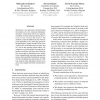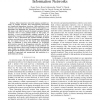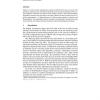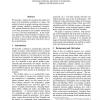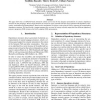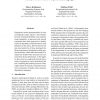ACL
2012
12 years 9 months ago
2012
We propose a new approach to characterizing the timeline of a text: temporal dependency structures, where all the events of a narrative are linked via partial ordering relations l...
ACL
2012
12 years 9 months ago
2012
This paper presents a comparative study of target dependency structures yielded by several state-of-the-art linguistic parsers. Our approach is to measure the impact of these noni...
ASUNAM
2011
IEEE
13 years 7 months ago
2011
IEEE
Abstract—Many important real-world systems, modeled naturally as complex networks, have heterogeneous interactions and complicated dependency structures. Link prediction in such ...
ACL
2009
14 years 5 months ago
2009
This paper describes log-linear models for a general-purpose sentence realizer based on dependency structures. Unlike traditional realizers using grammar rules, our method realize...
CLIN
2000
14 years 8 months ago
2000
Alpino is a wide-coverage computational analyzer of Dutch which aims at accurate, full, parsing of unrestricted text. We describe the head-driven lexicalized grammar and the lexic...
ACL
2004
14 years 8 months ago
2004
We describe a method for enriching the output of a parser with information available in a corpus. The method is based on graph rewriting using memorybased learning, applied to dep...
EMNLP
2008
14 years 8 months ago
2008
We explore a stacked framework for learning to predict dependency structures for natural language sentences. A typical approach in graph-based dependency parsing has been to assum...
LREC
2010
14 years 8 months ago
2010
This paper shows that a LAF/GrAF-based annotation schema can be used for the adequate representation of syntactic dependency structures in many languages. We first argue that ther...
ACL
2007
14 years 8 months ago
2007
Dependency structures do not have the information of phrase categories in phrase structure grammar. Thus, dependency parsing relies heavily on the lexical information of words. Th...
ACL
2007
14 years 8 months ago
2007
Dependency-based representations of natural language syntax require a fine balance between structural flexibility and computational complexity. In previous work, several constra...
